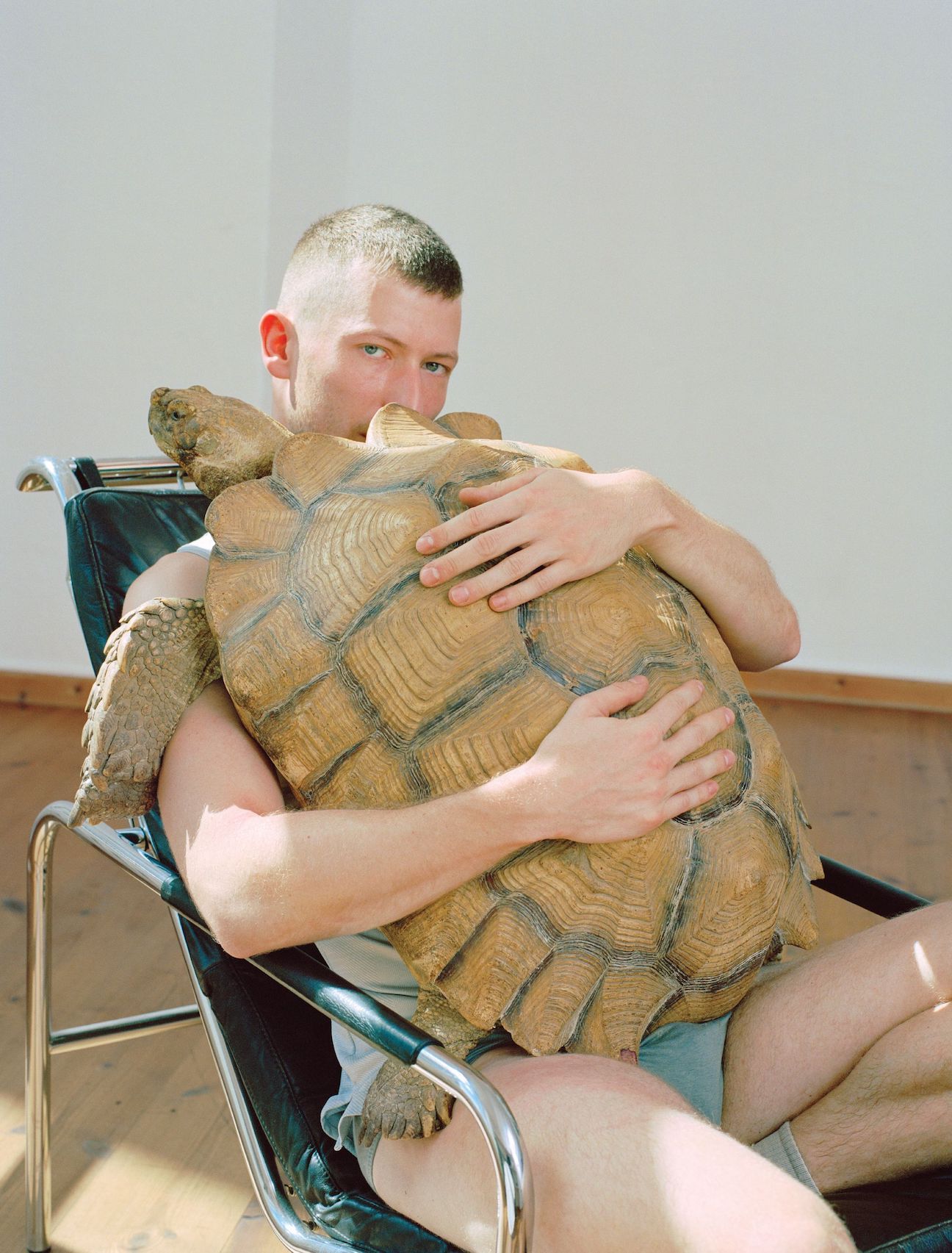Neue Welt: Elysium
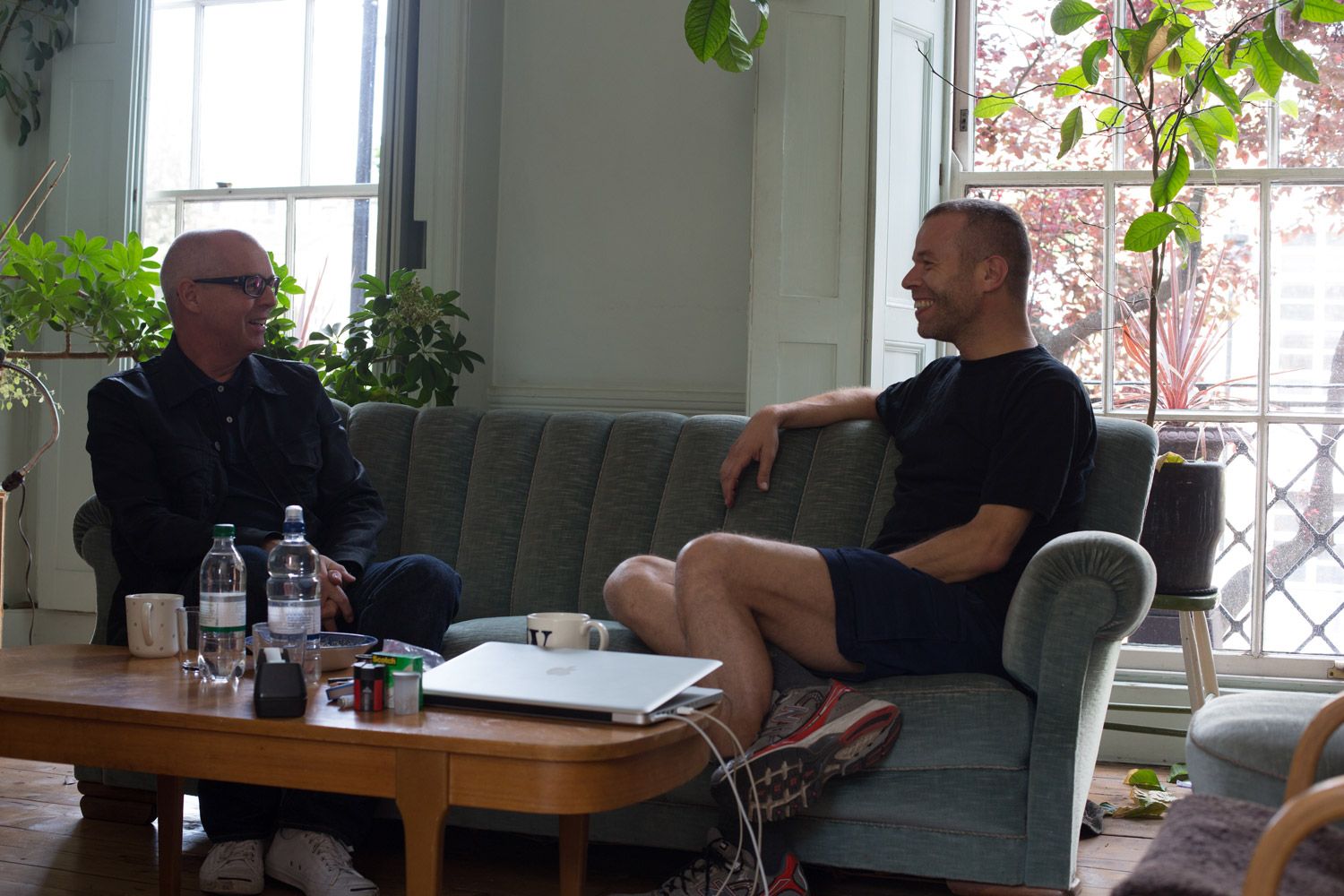
WOLFGANG TILLMANS, known for the groundbreaking aesthetic of his intercontinental photography, meets NEIL TENNANT, front man of the ever-evolving PET SHOP BOYS. In the photographer’s London living room, the long-time friends catch up, ruminating on a series of new photos, a long awaited album, the quandaries of aging, wealth, and the obscure patterns that run through them all.
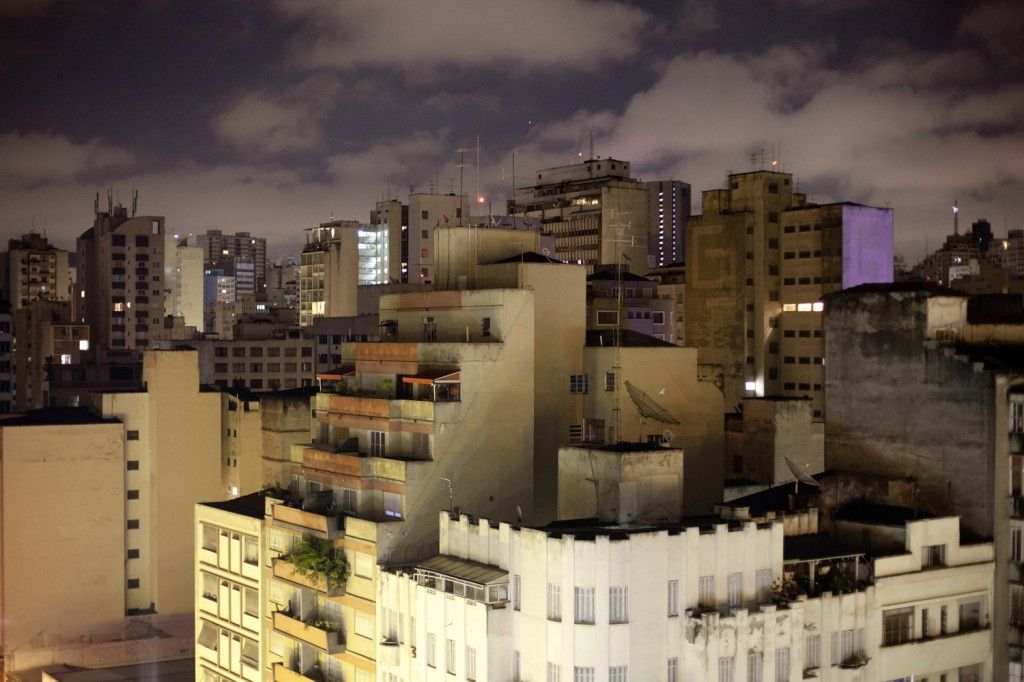
WOLFGANG TILLMANS: What’s behind the new album title, “Elysium”?
NEIL TENNANT: Oh, it’s classic mythology. It means heaven, or the afterlife, or paradise. It came up because in Los Angeles there is a park called Elysian Park. It’s got this famous avenue of palm trees and we went for a walk there. We nearly called it “happysad,” in one word, but thought it was a bit corny.
WT: ’Cause it feels a bit happy sad. There is quite a touch of melancholy or sadness.
NT: I think it’s because we confronted the issue of aging in Pop music, a supposedly young people’s medium. There’s also a lot of death in it. It starts with the line, “Our love is dead.” I think that’s because my parents died within the last five years and I hadn’t written anything directly about it. But I think it makes you feel differently. It’s a bit like you move forward in the front line, you know. Your parents are still alive, I think?
WT: Yes, and now you’re the next …
NT: … in the firing line, yes. Your relationship to the world feels a bit different.
WT: Do you think the subject of aging is ever dealt with or is it an ongoing question? In the last six years or so, my late-30s, with my best friends Lutz and Alex, we’ve been constantly thinking and absorbing the question. The great thing is that we have solidarity with each other – we’re getting old together. We can joke about it. It’s an ongoing thing now for me to observe how my life is changing and how I feel a detachment from younger generations. I wonder if one ever arrives somewhere, or is this an ongoing process?
NT: No, but I think you get to a phase. It’s the conveyer belt feeling: you’re on a conveyer belt moving ever slightly faster towards death. When you’re younger you have the idea of a plateau, a destination; but there is never really a plateau. The seasons pass quicker, things change around you. You never march to that point, where you put up your feet and think, “Great, relief, put your feet up.” That is never going to happen. In a way you’re grateful because you keep carrying on.
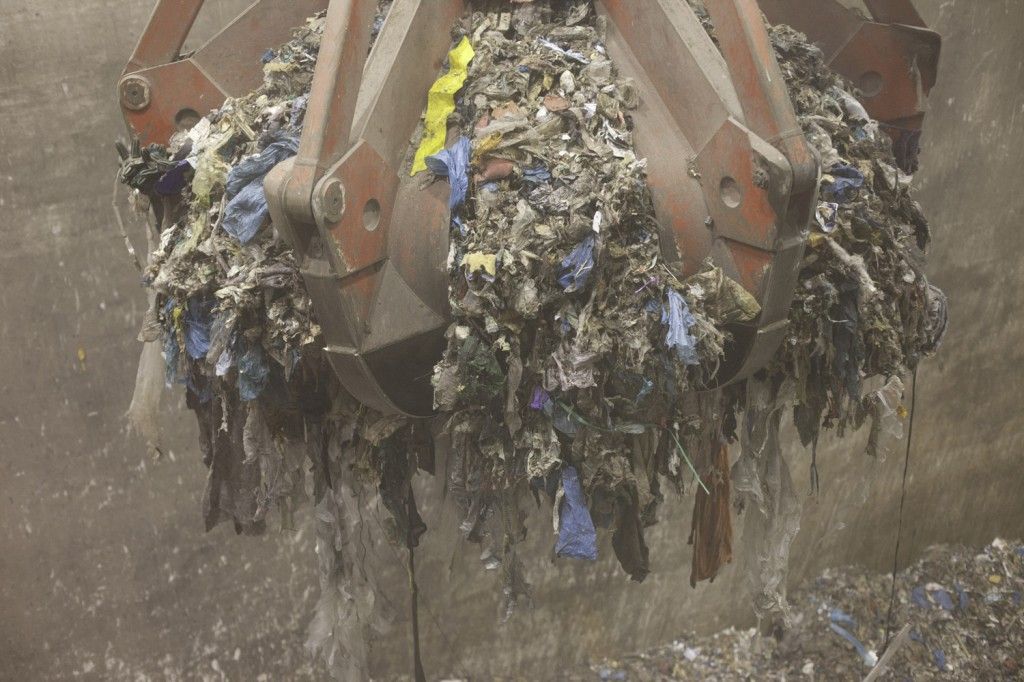
WT: But is it an artists’ thing that we are permanently driven and do not want to reach this plateau? We avoid saying, “Well, this is enough. Now I can enjoy what I have been doing?” I mean, I’ve gone through this the last three years, working on these new photographs, somehow seeing what photography, what the camera, could do for me now. It put me through a whole lot of stress and sometimes, useless effort. If I had been more relaxed, the results might have been the same. Why try to reinvent it again?
NT: Well, it’s been reinvented around you anyway. I mean your book, when I look at it I’m driven to go round the world, basically. And when you go around the world these days, what you really see is the impact of technology everywhere, changing everything. It’s definitely a different impact of technology than it would have been 15 years ago. It’s weird how we can live side by side with so much plastic and trash. Weirder still, trash can have the same patterns as nature. I noticed that very strongly in your new book. You’re caught up in that. You really are reflecting and recording that. Is that your drive?

WT: My eyes and my brain are recording it anyway – I can’t ignore it.
NT: So you have an instinct for photographing the contemporary condition?
WT: I recognize that there is meaning in this. I recognize that photography is significant in terms of being a marker of change. Like seeing the polystyrene that people in shantytowns in the southern most city on the earth, Ushuaia, use as heat insulation, seeing the traces of the technological products that were in this packaging. I saw how the shantytown imprints itself onto the rainforest. I look there and then I think, “This is new.”
NT: There is a total clash between the two. Between the horrifically synthetic and the natural forest. At the same time there’s a pattern, to which they both belong. I remember taking acid years and years ago. It was incredibly strong and it made me see the world differently for the rest of my life. I had a really bad trip, but I realized when I was walking through Tottenham on that very overcast day – everything was a pattern. Even the rubbish on the street was a pattern.
When I looked through your book, it made me think of that. You probably didn’t intend this, but the human use of synthetic materials for basic needs is a stronger pattern than the pattern of the forest. I don’t know if that makes sense. Do you find that a bit odd and new age? The pattern of the stars in your photographs could be the pattern of a lot of rubbish. I mean, a lot of it actually is detritus from some astral explosion several gazillion years ago.
WT: A few years ago, this sentence popped into my head: Life is astronomical. We often think that the man-made is separate from the rest of the world, but in fact, we have to understand ourselves as one with nature, with this planet. We are only a part of this astro-geological condition that has created this planet. On the one hand this is all just part of something so big, that we should absolutely not think that we are special in any way. On the other hand, I might as well say: Well, but anyway I do care and anyway I want love and solidarity between people. I don’t know what these philosophical and altruistic impulses are good for, but I still want to believe in them. I somehow found there to be some peace in this for me.
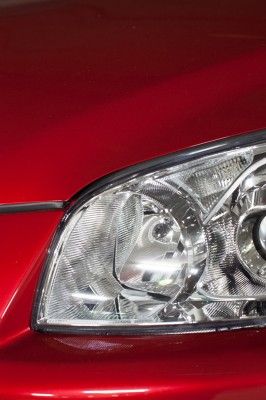
NT: In the book, you juxtapose your abstract works with photographs from around the world, which you know I really like. Some of these abstract works are kind of accidental, aren’t they? I wondered if you were seeing the non-abstract works also as accidents? A lot of what human beings do produce accidental results that are as important as what they set out to do. Was this the parallel you were drawing?
WT: Yes, because almost without exception, I didn’t interfere with the subjects in this book. So there’s no staging, no set up. There’s obviously always the decision about camera angle but it’s usually just me, looking. The pictures are not a result of expressive direction. With the abstract ones, I did set up the chemical reactions that could create the kind of patterns I want. There has to be a framework for these accidents to happen. I would also say that I, with my camera in the world, am a set up for other accidents or encounters to happen. Travelling with a camera, one could easily become overly cautious, overly PC, and overly protected, overly preemptive. I never try to avoid misunderstanding. I thought I’d just go and see what was going on in India or what China looks like on the surface.
NT: On our album we have this song called “Everything Means Something” that I think is related to the way you present patterns in your book. Something I noticed was how you highlighted the aggressive look of today’s car head lights. You have many photographs of them in your book,
and they show the shifts in the mind of the car designer as well as the consumers. People’s idea of a car has gone from friendly, sexy, glamorous – which are the ideals of cars in the past – to aggressive. At the moment it’s just posh cars, but it’s gonna go down the food chain. I don’t know how the world got so aggressive, but it means something.
WT: Well, I guess it is really about an “everybody for themselves” ethos; to drive away from the rest of the world. It is about the widening of the rich-poor-divide. That in itself is aggressive. Cars weren’t sold to us as aggressively 10, 20 years ago, but it has now become so.
NT: They were sold in a very aggressive way in Britain. You can’t show status without being aggressive.
WT: That idea that being rich is aggressive wasn’t something people focused on 20 years ago. In the past there were class wars, of course, but then the rich somehow had the role of being a benefactor for others. Being rich wasn’t a “bad” thing, because society benefits from its wealthiest members. All of a sudden, being rich wasn’t neutral anymore – it became about an aggressive kind of consumerism.
“These free ways of belonging are repressed because they are financially unexploitable. Instead, we have things like organized sports, the military and religion.”
NT: In our adulthood, the idea of being rich has changed. I’ve been very aware of this in the music business. In the 90s the compensation an executive expected to get in a company increased dramatically. In the 60s, EMI was run by a guy named Sir Joseph Lockwood, who would have had a house in Surrey and a chauffeur-driven car and a flat in the south of France. Today, as the head of an international company you would expect far more than that. You’d have a company jet, and you’d have houses and cars and when they got rid of you for your incompetence you would cash in your share options. A head of EMI left with 15 million dollars and you wonder, “Where does that 15 million dollars come from?” This culture is of course what led to where we are now. It leads to the fact that the less wealthy copy the habits of the rich. I mean, when did people start consuming like the rich? When did people start wearing clothes for one season?
WT: Exactly. There is an aggression in how we consume and disregard other people’s labor and time. We think that all this consumption is natural and ethically neutral. It is actual people, real men and women, working in these sweatshops and they have to find meaning in their occupation. I mean this is their daily work life – to acid wash these jeans that will end up falling apart in three months on some European teenager’s hips. It’s so cruel. But the question is, if we really did consume less, which I don’t know we are capable of, what would the implications be? Would everything collapse? Is that an even bigger tragedy?
NT: There is something that works against all of this, and that is religion. Religion isn’t really in your book, is it?
WT: No. I made a point to not include it. There are more relevant things for me to look at right now. Over the last 20 years I’ve gone from being an overtly Christian inspired person to becoming completely anti-religion.
NT: I see most religions as weird. We just signed this petition letter to Putin in support of Pussy Riot. Pussy Riot protested against Putin in an Orthodox cathedral and when you think about the exaggerated charges against them, you suddenly realize that the Russian Orthodox Church has had a major comeback in Russia. Its relationship to Russian society is as feudal as it was in the 14th century.
WT: Fundamentally, people want to belong; they want to be together. But people in power are terrified of free and natural congregations, like the unauthorized use of empty land for raves or cruising. These free ways of belonging are repressed because they are financially unexploitable. Instead, we have things like organized sports, the military, and religion.
NT: And pop music.
WT: Pop music plus shopping.
NT: I think shopping is really the main one.
WT: Yeah, the main shared experience. Nothing is free.
NT: Everything is sponsored.
WT: And religion is being used as this spirit-giver.
NT: But only in some parts of the world. Not in London,
not in Britain.
WT: America, Russia …
NT: America is, with most things, completely divided in the middle. What we lost in the 80s was the common experience of church going and now we only express human solidarity through sentimental events like rock festivals or the Olympic games. In the UK, when people went to church every week they had a feeling of being part of a community; there was a rhythm to their lives, which they don’t have now. Sometimes I do wonder if the traditional point of view doesn’t have some kind of validity.
WT: Have you read the conservative criticism of Danny Boyle’s Olympic ceremony? Yesterday in the Daily Mail, I read that the commentator was lambasting the ceremony as Marxist propaganda, which it was slightly. The only thing that he remarked positively on was the ceremony’s depiction of pre-industrial life.
NT: Trash is a theme throughout your book. My favorite is this amazing photograph – where is this?
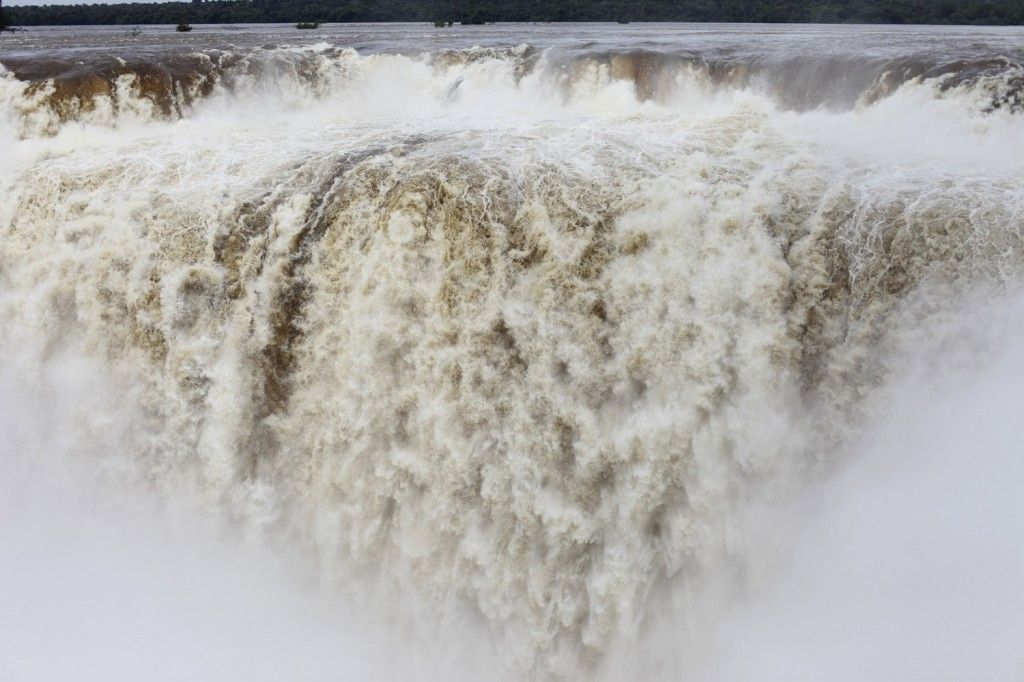
WT: Iguazu Falls at the border of Brazil and Argentina.
NT: You’ve got a layer of life on top of this massive waterfall. For me, this represents the precariousness of life lived amongst this toxic trash, which itself has a kind of inevitability almost as beautiful as the waterfall.
WT: It’s funny – if you would have told me, “You should photograph a trash pastiche,” it would seem like a bad idea, no?
NT: Was this image taken from an airplane?
WT: Yes. You know, when you’re on a plane you sometimes see when the land already has the night sky and above, the sky is still caught by sunlight.
NT: Yeah, I often think it is a great privilege of the modern age to sleep for those two hours when we can look above the clouds. I always think, “Let’s try a song about clouds,” and then I think, “Fucking Joni Mitchell has already done one.” She wrote “Both Sides Now”. Do you know that song?
WT: No.
NT: It is one of her famous songs from the late 60s or 70s. Frank Sinatra sang it, that’s how famous it is. Oh this! This is an amazing and disturbing photograph.
WT: That’s really tragic, that’s Port aux Prince in Haiti. That is the damage from an earthquake, just a whole city center shattered to rubble. There is a similar picture taken from a similar point of view of the workers quarters in Dubai, which is just a sprawling dust desert of cheap buildings where the workers are piled in. It’s interesting the role technology plays in the book. It’s in every picture, either in the subject matter or in the ability of my camera. This picture of the night sky over Kilimanjaro, or the cover picture in particular, I would not have been able to make five years ago.
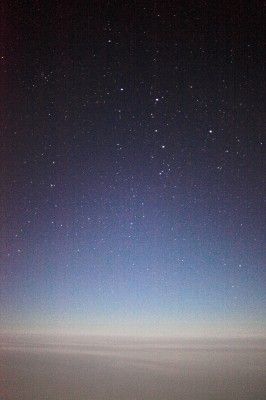
NT: Because of the technical limitations?
WT: Yes. This only looks the way it does because it is has an exposure time of less than five or six seconds. When I exposed it for 10 seconds you could see the stars as lines and the earth’s movement. In the past no film was fast enough to show that many stars in five seconds and now the sensor of my camera is so sensitive that five seconds is enough to show hundreds, almost thousands, of stars without the earth’s rotation being shown. That kind of picture never existed before. The cover picture is taken from a flying airplane, mid-Atlantic, on a moonlit night. The plane was flying so smoothly that I pressed the lens against the window and thought, “Let’s try to see if it’s possible to take a picture of the stars from a normal passenger plane.”
NT: Wow.
WT: It’s called In Flight Astro. I brightened up the picture on the computer so much that all the noise you see, the pattern, became so pronounced that you couldn’t actually tell the difference between a star and a pixel. The smallest bits in the world are just some electron making a blip and a star become the same in this picture.
Interview WOLFGANG TILLMANS
